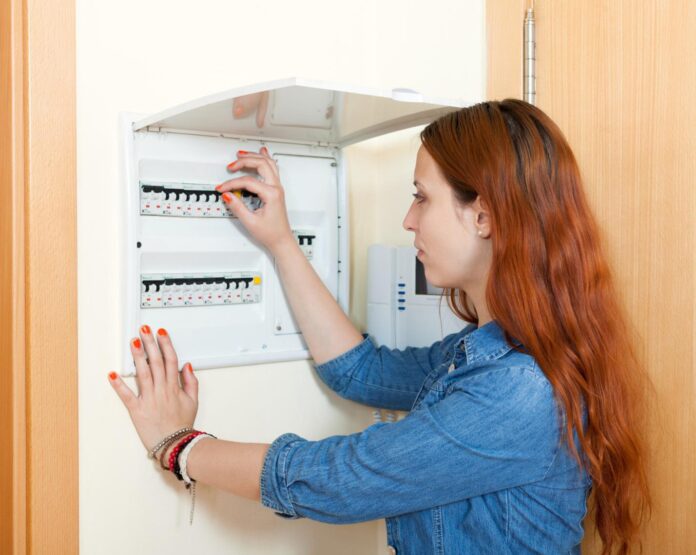If you’re a new homeowner or have minimal knowledge about electrical wiring, then you probably can’t identify an electrical outlet box from a spatula. Well, you’re not alone in this dilemma, especially when you need to buy one.
Electricians use junction boxes, or electrical boxes to protect wire connections. Short circuits can cause fires via short circuits. But, you can prevent them from using electric boxes.
Electric boxes come in a wide variety of shapes and sizes, with a wide range of materials and uses. They come in a variety of sizes and forms to suit your needs. Keep on reading to learn all about electrical boxes, and how to pick the right one for your home.
Electrical Outlet Box 101: Research Local Electric Codes
Obtaining the necessary permissions and researching your local electrical rules is essential before beginning this or any other electrical project.
The sort of electrical box that you can use for a particular purpose depends on your local rules. You can always find out more by contacting your local building inspector.
Installation Types for an Outlet Box
Depending on your targeted area for installing your electric box, you might find yourself in need of a specific kind of outlet box than others.
Let’s explore them one at a time.
Old Work Boxes
The old work crates are repurposed for wall installations. It isn’t essential to remove, replace, and refinish a substantial portion of the wall or ceiling in order to install a new box. The installation of an old work box is simple and requires little effort.
You may simply cut a hole wide enough for the box, insert the cable, and connect the box directly to the wall using the specific mounting tabs incorporated into the box. An old work box may be used for installation if the framework members are inaccessible.
New Work Boxes
For installations in walls or ceilings that aren’t covered or you can access from the rear, you’ll need new work boxes.
There are new work boxes that you can attach directly to the wall or ceiling. It’s best to start from scratch when you’re taking down or rebuilding an entire wall.
Connectors and Knock-Outs
Nonmetallic-sheathed (NM) cable, conduit, or metal-clad cable are all options for electrical boxes. NM cable boxes often include an integrated clamp to prevent the cable from being yanked out.
Knockouts of different sizes may be seen in conduit and metal-clad cable boxes. NM cable may also be run via these boxes. Connect the cable to the box using a specified NM cable connection.
The Kinds of Electrical Boxes
You’ll find some boxes that you can install behind or outside of walls, while others you can use inside or out. You can find many light switches, wiring, and outlets in them.
Generally speaking, you’ll find six main types on the market.
Utility Boxes
Installing outlets and switches on exposed surfaces is often done with the use of handy boxes (also known as utility boxes). Handy boxes are available in one-gang and two-gang variants for usage in the house.
There are some that come with a mounting bracket for connecting the box to a wall or ceiling. Not suitable for wall or ceiling lighting, ceiling fans, or outside weather-resistant installations.
Square Boxes
If you’re looking for something that you can use for several indoor applications, the square boxes come in a variety of sizes, as well as with or without mounting brackets.
Installing square boxes in-wall or on-wall (exposed) is a nice idea. As a junction point for many wires, you can use them to increase volume and wire-bending space.
Except for fan support, you can use the square boxes for any other ceiling applications. In addition to metal-clad cable, you can use steel square boxes with nonmetallic-sheathed cable and all kinds of conduit.
Switch Boxes
Switches are often installed in a switch box. On the exterior of the box, switch boxes include device-mounting tabs that may be used to attach devices. Only in-wall (concealed) installations are permitted for switch boxes.
Take into consideration the simplicity of installation in new work environments when selecting a device. If you’re installing in an existing covered wall, stick with the tried-and-true method of installing.
The Floor Boxes
When wall outlets aren’t an option, you may use floor boxes as an alternative power source within your home. Great halls and massive structures benefit greatly from the use of these boxes.
For the installation of old work boxes, you can create a hole in the floor or you can mount them during the building phase of the project. The thickness of any floor may be accommodated by floor boxes that are normally adjustable.
The Ceiling Boxes
You can only install lightweight ceiling lights and equipment such as smoke alarms in conventional ceiling boxes. To support large light fixtures and ceiling fans, use a certified ceiling fan/fixture support.
Mounting brackets are optional for ceiling boxes, which come in round or octagonal configurations. You can fix bracketed boxes directly to the ceiling or a wall-framing member with no difficulty at all. Or, you can use an old work box for installation if the framework members are inaccessible.
Weatherproof Boxes: Boxes that Can Withstand the Elements
Boxes made of weatherproof material may be used either outside or inside in damp or rainy conditions.
One and two-gang outlets and switches, as well as circular light fixtures, are available in a variety of sizes. To guarantee a trouble-free installation, always utilize a weatherproof or while-in-use cover.
You can also look into specialty outlet boxes if you can’t find one that really fits your unique needs.
Understanding Outlet Boxes: Explained
Most of us don’t pay much attention to our home’s wirings until there’s a glaring problem and it’s too late for a quick fix to save the day.
We hope that our guide has shed some light on the nuances of an electrical outlet box and the different forms it can take. But, you might feel like need to learn more about your home’s foundations. You can head straight to our home improvement section for all the additional tips and tricks you might need.










![Anso FG Reviews: UPDATED 2024 [ansofg.com] Anso FG Reviews UPDATED 2024 [ansofg.com]](/wp-content/uploads/2023/12/Anso-FG-Reviews-UPDATED-2024-ansofg.com_-100x70.png)







